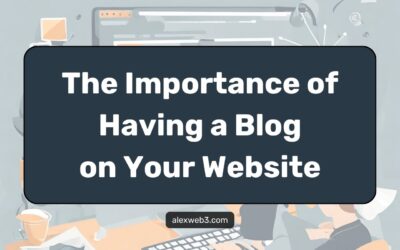Before you start coding away, take a moment to test out your product idea. Ask yourself if your idea really solves a problem people have. Trust me, it’s better to find out now than after spending hours or weeks coding.
Don’t Dive in Blindly
In the world of software development, there’s a common pitfall that many solo developers (including myself) stumble into: jumping straight into building their Proof-of-Concept (PoC) or Minimum Viable Product (MVP) without first checking if anyone actually wants it.
In my mind, there are two different groups of products you can build as a solo developer, entrepreneur, or indie hacker – the products you really need in your daily routine, or the products that you think will solve other people’s problems.
When I started with my Bronitoring (SEO tool), first of all, I needed such a tool to help me find potential customers for my software development services. And it worked great because I was the first real user of my own product.
So, let’s dive in!
Test the Waters
Reach out to potential customers and ask for their thoughts. You might be surprised by what you learn. Maybe your idea needs a tweak or two before it’s ready for prime time.
How many times have we, as developers, built something meaningless? Many times. We come up with an idea like “Wow, it will be amazing to have such a tool,” and we jump in and start writing code, building infrastructure. After a few weeks, we realize that actually, that product doesn’t solve any problems, even our own!
Don’t make this mistake. Even if you think your product idea is great – test it out first. Find a group of people who might be interested in it. There are many resources (including books) that can help you do that. You can start with “Mom’s Test” first.
Learn from Past Mistakes
I’ve been there myself – starting projects with all the best intentions, only to realize later that nobody actually wanted what I was building in my spare time. It’s a tough lesson to learn, but an important one.
What were those products?
Chartik: a price tracker for online shopping. I launched it 2 years ago and had 10-15 customers, but it wasn’t enough to keep working on such a product because there were 10 web servers, hundreds of parsers and crawlers, infrastructure costs were too high to keep building.
FutúSho: a digital marketplace on blockchain. An absolutely amazing idea that came to my mind. There are still no marketplaces like that because crypto payments are not widely adopted. I launched it about 8 months ago as an MVP, and it is still in development.
BurnMyFat: a fitness tracker I built 6 years ago. It was a Ruby on Rails application with a React Native mobile app. Great idea, bad implementation. I had everything: diagrams, UMLs, customer journey, tests, a channel on YouTube. What was wrong? It wasn’t possible to build such a tool as a solo developer.
OptriSpace: a decentralized freelance platform on Binance Smart Chain. We spent tons of money on marketing without being notified that nobody really wants to use it.
2-Factor Authentication Platform: another example when we, as a team of developers, wasted more than a year building something nobody wants to use. There was everything that every developer may want to work with: Rails, Cassandra, ElasticSearch, 18 nodes, 3 data centers, 3 mobile applications. Holy moly, such a great fault!
Language Learning Companion: it should’ve solved one problem – helping teachers and students work together. It’s not the same as Preply or Italky; it was more about a blog or private groups for learners, where everyone is able to share their progress and have some kind of home assignments online. I gave up quickly when I realized that this idea is… bad. I spent not so much time to prove it, one week or so.
As you can see, I’m in the same boat with many other developers who made the same mistake. We love building instead of validating and selling first.
Focus on the Problem, Not Just the Code
As developers, it’s easy to get caught up in the technical details and forget about the real reason we’re building something – to solve a problem for our customers. Keep the focus where it matters most.
We all love writing tests, building resilient architectures, working on distributed systems, testing out a new framework, etc. Do we really need all of that stuff before even getting a few customers? Nah.
A few weeks ago, I read an article explaining that you must not build your product without having at least 100 subscribers on your waiting list. I like such an idea and I need to focus on it. For me, it’s super difficult with my huge experience working with enterprise products, where everything is clear (almost), there is a product vision, and other stuff.
But, for solo developers or small startups, we need to validate our ideas first.
Listen Up
Seriously, listen to your potential customers. Their feedback is like gold – it can help you shape your MVP into something that people actually want to use.
I spent hundreds of weeks developing my own products that I thought would help people. How wrong were my thoughts! I was building everything in silence without reaching out to people and asking them questions.
Every time I delivered a new feature, I was satisfied. I did it! I did that. Who cares about it if nobody’s going to know about a product you are building in silence? Get out of your comfort zone, try to reach out to a few people, tell them about your product, and be ready to get their honest feedback.
Don’t be fooled – people would love to give you feedback.
Start with a Landing Page
A simple landing page can work wonders for validating your idea. Put it out there and see who bites. You might be surprised by the results.
Don’t forget to configure and set up analytics tracking code to get all the necessary information. Also, I’d suggest connecting Microsoft Clarity to take a look at users’ behavior on your page.
Nobody reaches your goal or your metrics are poor? Make changes, try again, until you reach 100 subscribers. For me, it must be a mantra. 100%.
If you need any help with landing pages – reach out to me, I can build you a website in a matter of time. Of course, with many benefits.
Try Some Paid Ads
If you’re feeling brave, why not try running some paid ads? They can help you reach a wider audience and get more feedback on your idea. Not only on search engines, but also try paid ads on Facebook, LinkedIn, or Twitter. It works.
We did it a few times before with my previous team, but we did it wrong. We spent so much money because we didn’t even understand how that works. If you don’t know how to work with ads – there are plenty of freelancers or marketers out there who can help you with that.
But for the first time, try it by your hand.
Get Social
Don’t forget about social media. It’s a great way to connect with potential customers and get them excited about what you’re building. Or get them bored about your magical button that will not work for them. Which is really cool, because you can easily ask them what is wrong with your idea.
There are plenty of resources where you can promote your product: Twitter, MicroLaunch, ProductHunt, DevHunt, Reddit. Just create a post and get your first feedback.
LinkedIn is Your Friend
LinkedIn isn’t just for job hunting – it’s also a valuable tool for validating your product idea. Reach out to your network and see what they think.
Do you want the real truth? Only 5% (or less) will respond to you. I tested it, and for 100 messages, I got only 5 responses. What is this all about? It’s about your value proposition, your tone, and the problem you’re trying to solve with your product.
No Feedback? No Problem
If you’re struggling to find anyone interested in your idea, don’t worry. It’s all part of the learning process. Take what you’ve learned and use it to make your next idea even better.
Summary
In summary, don’t make the mistake of building an MVP without first validating your idea. Take the time to listen to your potential customers and make sure there’s a real demand for what you’re building. Trust me, your future self will thank you for it.




0 Comments